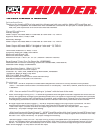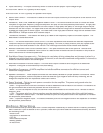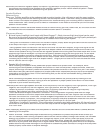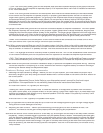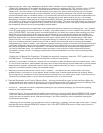4. Input Sensitivity – The Input Sensitivity switch is used to set the proper input voltage range:
X1 POSITION: 100mV–1V (Typically for RCA Input)
X10 POSITION: 1V–10V (Typically for Speaker Level Input)
5. Stereo Gain Control – This feature is used to fi ne-tune the input sensitivity of the amplifi er to the source unit’s
output level.
6. Variable Hi, 12dB / Low, 24dB Mono @40Hz–350Hz X-over – This control allows the user to choose the exact
low pass or high pass frequency range the amplifi er will play for the best possible performance. A high pass
or full range output may be selected for the front output. A high pass, low pass, or full range output may be
selected for the rear output. The upper end of the low pass crossover range can be selected from 40Hz–350Hz
at 24dB per octave with a mono output. The lower end of the high pass crossover range can be selected from
40Hz-350Hz at 12dB per octave with a stereo output.
7. ThunderEQ (Variable) – This feature will add up to 18dB of low frequency impact to the audio system. The
Bass Boost is centered at 40Hz.
8. A.R.C. – The Active Resonance Control (A.R.C.) is a level adjustment that reduces the resonant frequencies
inside the vehicle to improve the midrange sound quality. Turn this in either direction until the vocals of the
music are up front and centered in the vehicle. The midrange sound should be smooth and detailed.
9. Remote Subwoofer Level Control (Remote Gain) – This port allows the use of the optional “remote level
control”. The Remote Subwoofer Level Control is a bass control module that can be installed in any location
within the vehicle for remote adjustments.
10. Dual Mono Output (low pass only) – This feature is used when driving subwoofers and the amp is wired in a
bridged front and bridged rear confi guration (2-channel) or all channels combined confi guration (1-channel) to
ensure all channels receive the same signal.
11. Summed Front/Rear Line Level Output – This line level output is used to send a signal to an additional
amplifi er. The signal is not affected by front/rear fading.
12. StreetWires Connectors – All MTX amplifi ers include StreetWires connectors for effi cient current and
maximum voltage transfer.
13. Speaker Connection – These output terminals are individually labeled for proper speaker connections. When
bridging the amplifi er, use the left positive terminal and the right negative terminal only. Warning, do not
bridge the amplifi er with an impedance lower than 4 ohms.
14. Power Terminals – This is the main power connection for the amplifi er. The power and ground wire size
should be the same gauge.
• GND – The ground wire from this connection must be attached to bare metal on the vehicle. The distance to
the ground should be as short as possible and no more than 18”.
• REM – To turn the amplifi er on/off, this terminal must be connected to the source unit’s “remote or electric
antenna” wire.
• +12V – The power wire from this connection must be attached to the positive side of the vehicle’s battery.
• CAP+ - Capacitor Positive Input - The ideal connection point for the positive side of the capacitor to increase
the amplifi er’s performance.
• CAP- - Capacitor Negative Input - The ideal connection point for the negative side of the capacitor to increase
the amplifi er’s performance.
Before Starting
MTX recommends that you have your new Thunder amplifi ers installed by an authorized MTX retailer, preferably
MECP certifi ed. If you do decide to do it yourself, make sure you have read the instructions carefully and have
the following tools:
• Electric drill
• Phillips bit or screwdriver
• 1/8” bit
• Wire cutters/crimpers
• Safety glasses
• X-Acto knife



